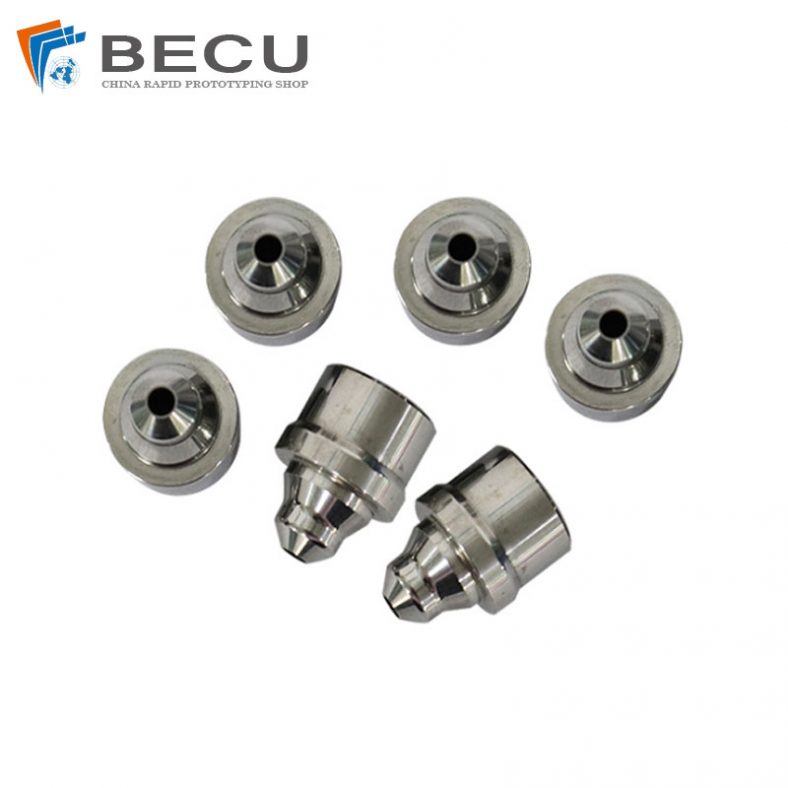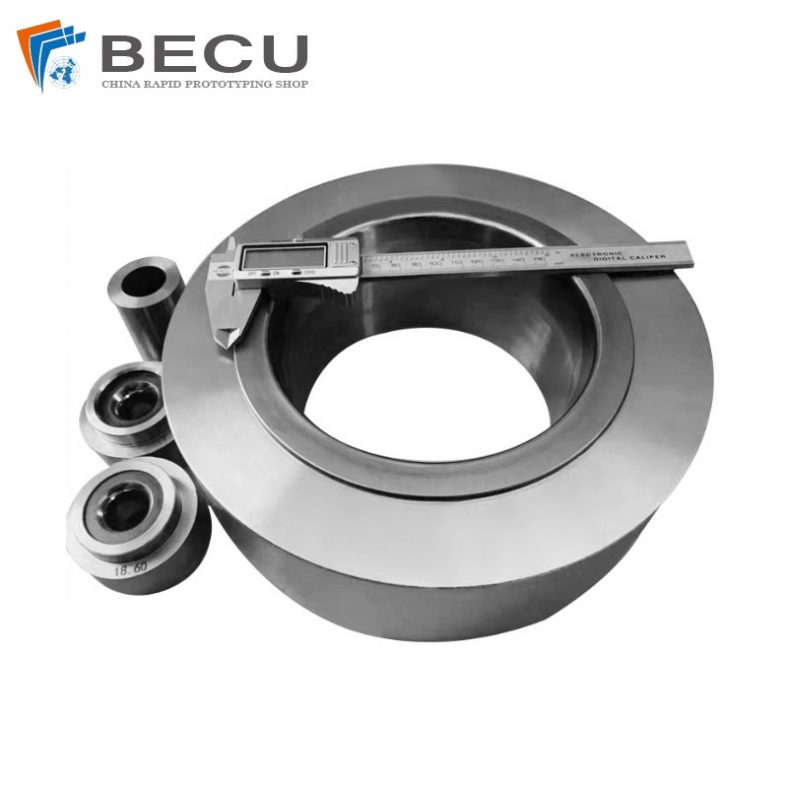Tungsten, known for its exceptional melting point and remarkable mechanical properties, holds a significant place in modern technology and industry. In this comprehensive article, we delve into the science behind tungsten melting or tungsten machining, various melting techniques, applications, and safety considerations. From traditional methods to advanced technologies, readers will gain insight into the fascinating world of tungsten melting.

Properties and Significance of Tungsten
Tungsten’s exceptional properties, such as its high melting point, density, and resistance to corrosion, make it an indispensable material in various applications.
Its mechanical strength and electrical conductivity contribute to its use in aerospace components, light bulb filaments, and electrical contacts.Tungsten, a chemical element with the symbol W and atomic number 74, boasts the highest melting point of all elements.
With a melting point of 3,422 degrees Celsius (6,192 degrees Fahrenheit), tungsten finds application in diverse industries including aerospace, electronics, and energy. This article aims to provide an in-depth understanding of the techniques used to melt tungsten, the importance of its properties, and its wide-ranging applications.
Tungsten Melting Techniques
Tungsten’s extraordinary properties and high melting point necessitate specialized techniques for melting and shaping this versatile material. In this section, we explore some of the primary methods employed in the tungsten melting process.
1. Electric Arc Melting
Electric arc melting is a conventional method used to melt tungsten and other high-melting-point materials. This technique involves creating an electric arc between two tungsten electrodes. The intense heat generated by the arc causes the tungsten material to melt. Electric arc melting offers advantages such as simplicity, flexibility in batch sizes, and the ability to achieve high-purity tungsten ingots. This method is commonly used for the production of raw tungsten feedstock.
2. Induction Heating
Induction heating is a precise and efficient technique for melting tungsten. It employs electromagnetic fields to generate heat directly within the material. An alternating current (AC) is passed through a coil, inducing eddy currents within the tungsten, resulting in resistive heating. Induction heating provides excellent temperature control, uniform heating, and reduced oxidation due to the absence of direct contact with heating elements. This method is often used for applications that require specific melting conditions or high-purity requirements.
3. Electron Beam Melting
Electron beam melting is an advanced technique that utilizes a high-energy electron beam to melt tungsten or other materials. In this method, electrons are accelerated and focused onto the tungsten target. The kinetic energy of the electrons is converted into thermal energy upon impact, leading to localized melting. Electron beam melting offers exceptional precision and control over the melting process, making it suitable for producing complex shapes and components with minimal waste. It finds application in industries where high-performance materials are required, such as aerospace and defense.
4. Laser Melting
While not as common as the previously mentioned techniques, laser melting has gained attention as a potential method for melting tungsten. In laser melting, a high-intensity laser beam is directed onto the tungsten carbides material, generating heat and causing localized melting. Laser melting offers advantages like rapid heating, reduced heat-affected zones, and the ability to produce intricate structures through additive manufacturing processes. However, challenges such as managing heat dissipation and achieving uniform melting still need to be addressed to fully harness its potential.
5. Vacuum Arc Melting
Vacuum arc melting (VAR) is a specialized method used to produce high-purity tungsten ingots. In this process, an electric arc is established between a consumable tungsten electrode and a water-cooled crucible. The arc vaporizes the electrode, and the vapor condenses on the crucible walls, forming a solid ingot. The vacuum environment minimizes contamination and oxidation, resulting in high-purity tungsten ingots suitable for critical applications such as aerospace and electronics.
6. Plasma Arc Melting
Plasma arc melting involves using a plasma torch to generate high temperatures for melting tungsten and other refractory metals. The torch uses a mixture of inert gases (e.g., argon) that is ionized to create a high-temperature plasma. This plasma arc delivers intense heat to the tungsten material, causing it to melt. Plasma arc melting is particularly advantageous for producing alloys and composite materials due to the high energy and flexibility it offers.
The various tungsten melting techniques outlined above cater to different industrial needs, ranging from producing high-purity ingots to fabricating intricate components. The choice of technique depends on factors such as the required purity level, desired shape complexity, and production efficiency. As technology advances, these methods are likely to become even more refined, enabling us to unlock the full potential of tungsten in industries that rely on its exceptional properties.
Safety in the Fires of Transformation
1. Toxicity and Handling: Managing the Elemental Dance
While tungsten itself is not highly toxic, precautions are essential when working with tungsten dust and fumes. Adequate ventilation, personal protective equipment, and safe handling practices mitigate potential health hazards.
2. Fire and Explosion Hazards: The Dance of Flames
Tungsten in powder form can ignite and pose fire hazards. Additionally, tungsten powder-air mixtures have the potential to become explosive. Careful handling, storage, and preventive measures are crucial to avert these dangers.
Future Frontiers: Forging Tomorrow’s Tungsten
As technology advances, new methods for tungsten melting are likely to emerge. Additive manufacturing techniques, such as selective laser melting, could revolutionize the production of intricate tungsten components. Additionally, research into novel tungsten alloys and composites could expand its applications even further.
1. Advancements in Melting Techniques: A Glimpse Ahead
As technology marches onward, innovations in melting techniques are inevitable. Additive manufacturing, with methods like selective laser melting, could reshape tungsten component production, offering unprecedented design freedom and reduced waste.
2. Novel Alloys and Composites: Expanding Horizons
Research into novel tungsten alloys and composites holds the key to unlocking new applications. By blending tungsten with other elements, researchers strive to create materials with tailored properties that cater to emerging industry demands.
Conclusion
-

Precision Grinding Tungsten Steel Mold Parts
-

Special-Shaped Non-Standard Medical Device Needles
-

Precision Tungsten Copper Alloy Eccentric Insert
-

Carbide Tungsten Valve Seat For Oil And Gas Industry
-

Custom Hexahedron Tungsten Dnd Dice
-

Tungsten Carbide 3D Printer Nozzle
-

Sintering YG6 Tungsten Alloy Non-Slip Thread Screw
-

YG15 Tungsten Cobalt Cemented Carbide Parts
Tungsten’s journey from a solid mass to a molten marvel stands as a testament to human ingenuity and the quest for mastery over the elements. As we traverse through the foundational principles of its properties, the various techniques that initiate its transformation, and the industries that reap its benefits, we witness the symphony of science and engineering. With safety considerations acting as the silent guardians of this process, and the promise of innovation guiding us forward, the realm of tungsten melting remains both an art and a science that continues to shape our ever-evolving world.
